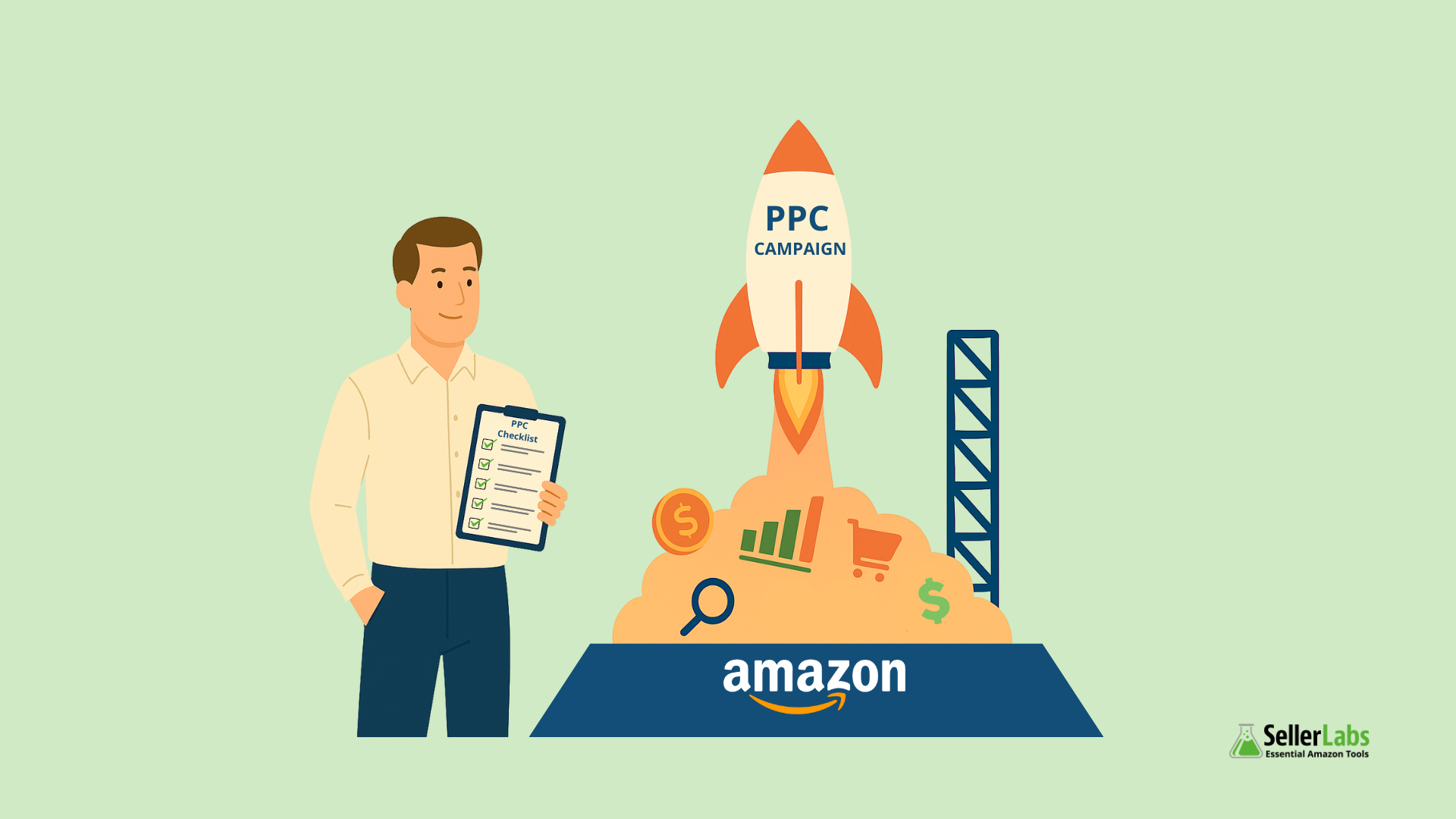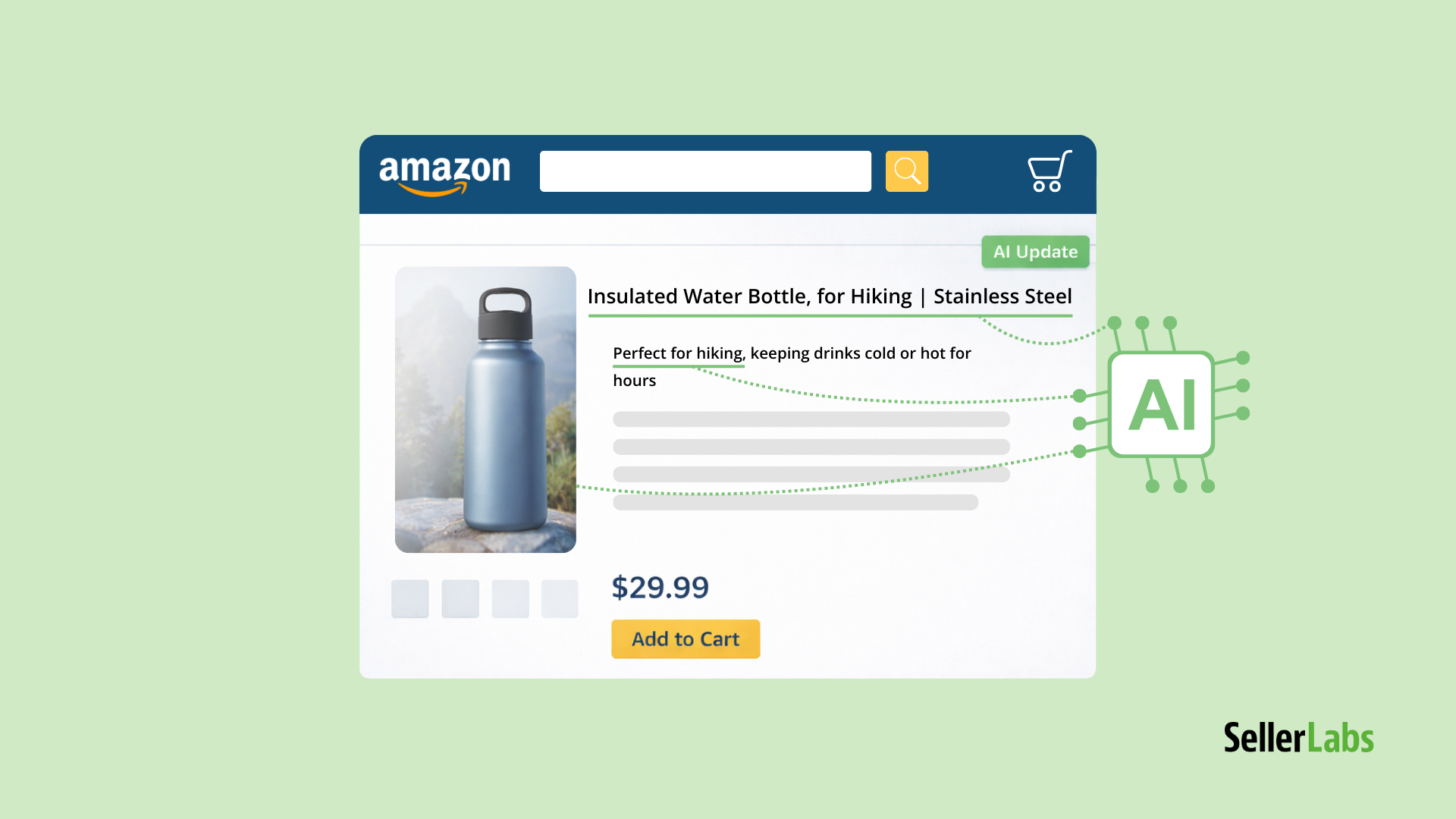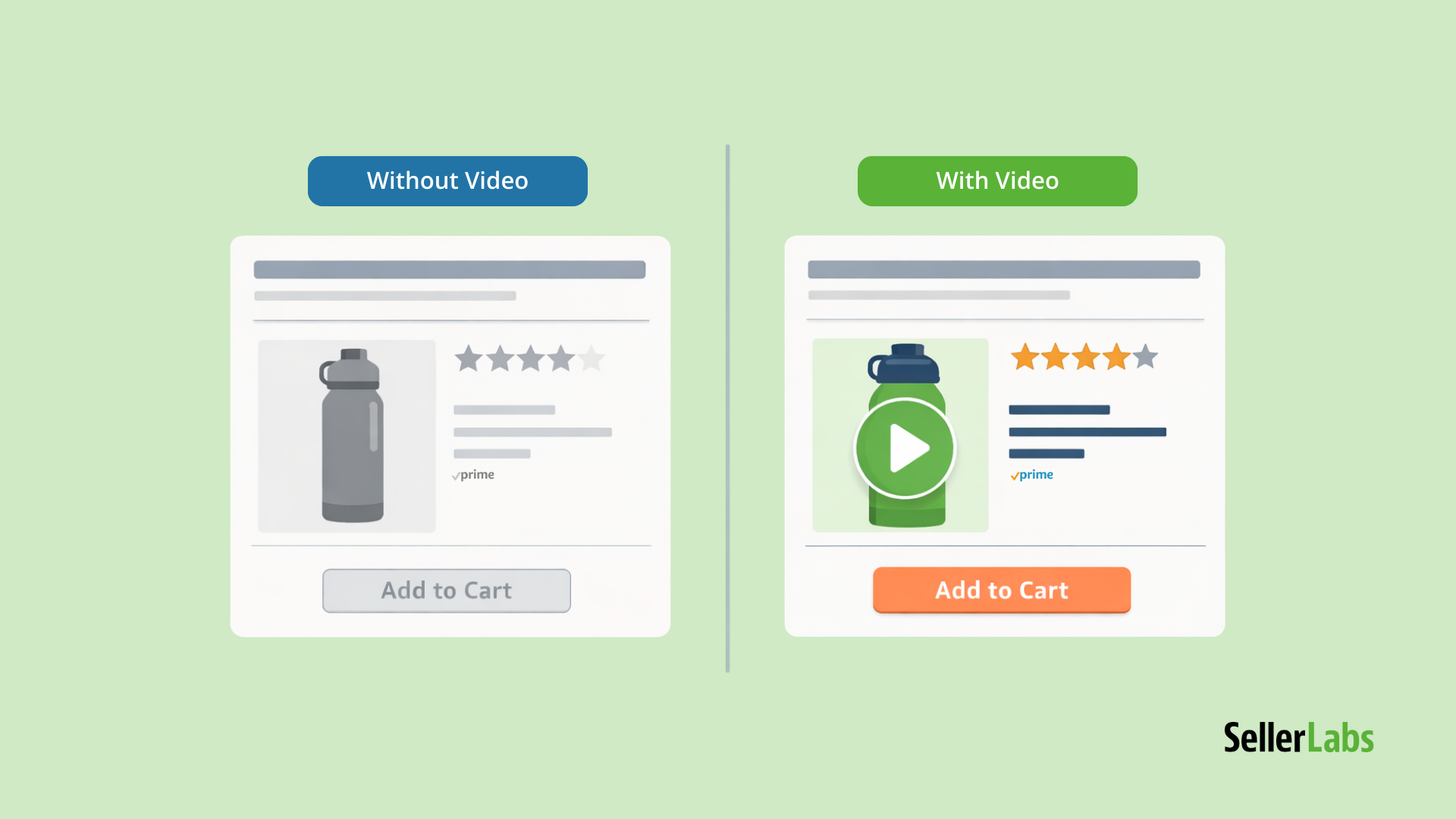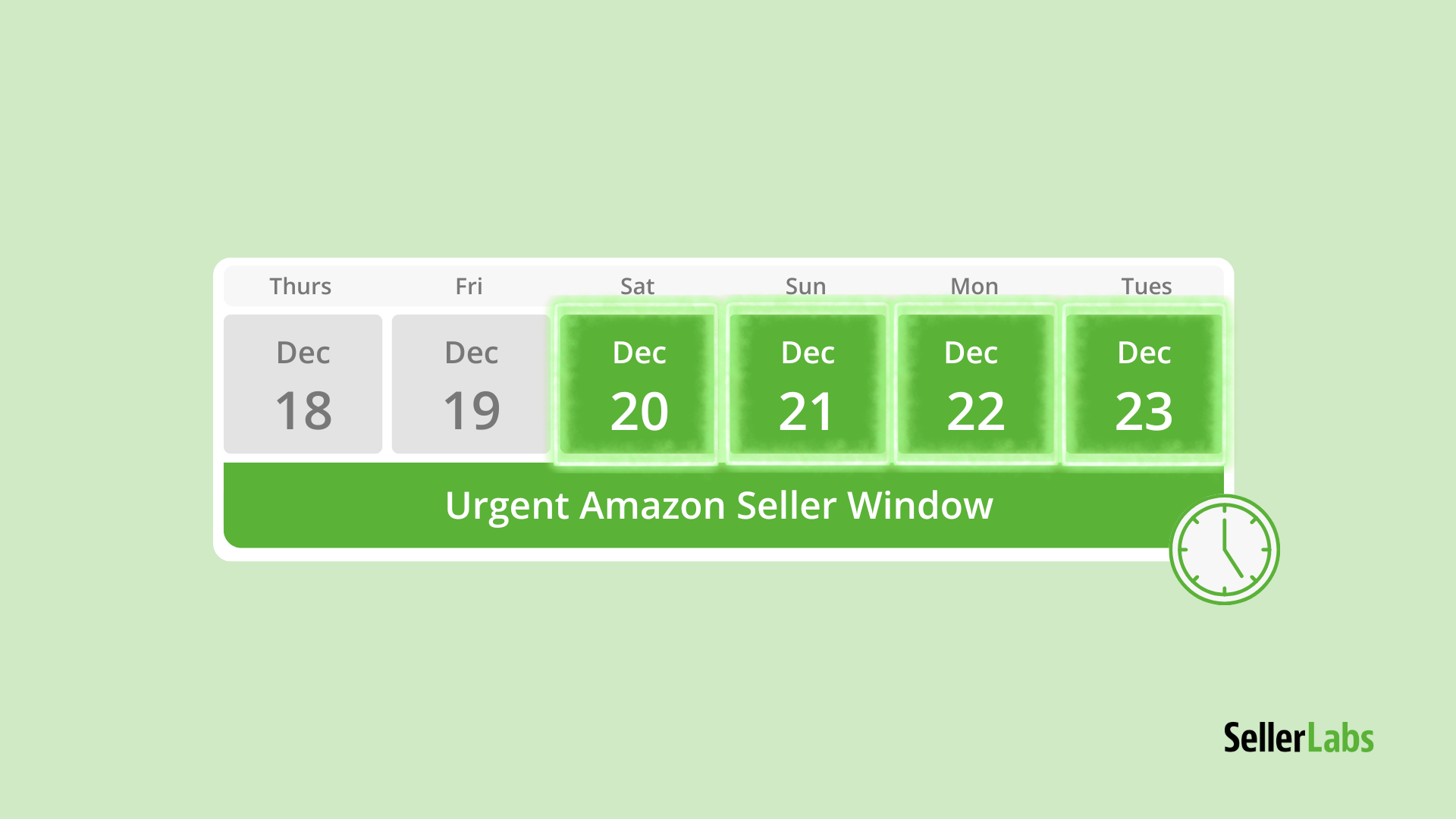Amazon advertising used to feel like a secret code only big brands could crack. Now in 2025, it’s not just accessible—it’s essential. If you’re launching a product on Amazon and skipping PPC, you’re not invisible. You’re irrelevant.
But how do you get started the right way?
This blog breaks it all down: the basics, the common questions, and how Amazon’s new AI shift is rewriting the rules. Whether you’re running your very first Sponsored Products ad or wondering how Rufus (Amazon’s AI shopping assistant) changes the game, this is your starting point.
And when you’re ready to level up, Seller Labs has the tools to help every step of the way.
Quick Guide: What You’ll Learn
- What is Amazon PPC and How Does It Work?
- How Much Should I Spend on My First Campaign?
- Which Amazon Ad Types Are Best for Beginners?
- How Does Amazon’s AI Shift Change PPC in 2025?
- What Are Common PPC Mistakes to Avoid?
- Why First-Time Sellers Succeed Faster with Seller Labs
- FAQ: Beginner Questions About Amazon PPC in 2025
What is Amazon PPC and How Does It Work?
Amazon Pay-Per-Click (PPC) is exactly what it sounds like: You pay when someone clicks your ad.
These ads show up in search results, product pages, and even competitor listings. With Sponsored Products (the most common type), you bid on keywords related to your product. When shoppers search those terms, your ad could appear.
If they click, you pay. If they buy, you win.
✅ Amazon rewards high-performing ads with more visibility, better placements, and more sales—especially during high-traffic windows like Prime Day or Black Friday.
How Much Should I Spend on My First Campaign?
This is the #1 question beginners ask—and the most misunderstood.
You don’t need thousands to start. You need clarity.
Here’s a simple formula to guide you:
- Take your product’s profit margin
- Estimate your break-even ACoS (advertising cost of sale)
- Set a daily budget of $10–$30 and monitor results for 7–10 days
But don’t just set it and forget it.
📈 With tools like Seller Labs’ Ad Genuis, you can:
- Monitor keyword-level performance with clear reporting dashboards
- Use the Suggestion Manager to automate and optimize bids for better performance
- Identify underperforming terms and reduce wasted ad spend efficiently
👉 Related reading: Amazon PPC Strategies That Work in 2025
Which Amazon Ad Types Are Best for Beginners?
There are three core ad types. Here’s what you need to know:
✅ Sponsored Products (Start Here)
- Appear in search results and product detail pages
- Great for single ASIN promotion
- Most beginner-friendly and ROI-driven
🔎 Sponsored Brands
- Highlight 3+ products with a custom headline
- Appear at the top of search results
- Great for brand-registered sellers with multiple SKUs
📽️ Sponsored Display
- Appear across Amazon and retarget browsers
- Ideal for remarketing but requires more budget control
Start with Sponsored Products to test performance. Once you understand what works, expand into Brands and Display to scale your reach.
How Does Amazon’s AI Shift Change PPC in 2025?
This is where things get exciting—and challenging.
Amazon’s AI (like Rufus and its new Shopping Agents) are changing how customers search, click, and buy. Instead of typing keywords, shoppers describe problems. And Amazon’s AI finds solutions.
That means:
- Keyword stuffing is dead
- Relevance matters more than exact-match hacks
- Your listing and ads need to speak to intent, not just traffic
From our blog: Amazon AI for Sellers in 2025
This also affects ad rankings. Amazon uses AI to evaluate:
- Click history
- Conversion rates
- Content clarity
- Review sentiment
If your listing or ad doesn’t answer what customers are really looking for, AI will skip it.
💡 Tip: Focus on keywords that reflect real buyer behavior. Tools like Ad Genius help you track what actually converts, not just what’s popular.
What Are Common PPC Mistakes to Avoid?
- Skipping listing optimization.
- You’re driving traffic to a dead end. Start with your product title and images.
- 👉 Fix title issues first: How to Fix Amazon Product Title Suppression (2025)
- Choosing the wrong keywords.
- Target terms your customers use, not just high-volume ones.
- Target terms your customers use, not just high-volume ones.
- Not tracking performance.
- PPC is math. Seller Labs gives you dashboards to visualize spend vs. return.
- PPC is math. Seller Labs gives you dashboards to visualize spend vs. return.
- Ignoring your reviews.
- Bad reviews = low conversion. Use Feedback Genius to monitor your product reviews and get alerted to negative feedback so you can take action quickly.
- Bad reviews = low conversion. Use Feedback Genius to monitor your product reviews and get alerted to negative feedback so you can take action quickly.
- Letting ads run out of stock.
- Use our Restock App to forecast inventory and keep ads live.
- 🎥 Watch how it works here
Why First-Time Sellers Succeed Faster with Seller Labs
Launching your first campaign is the first step. Growing it? That takes data, automation, and strategy.
At Seller Labs, we’ve helped thousands of sellers:
- Discover performance-driven keywords for smarter ad targeting
- Use real-time data to guide listing and campaign decisions
- Launch more strategic PPC campaigns with automation tools
- Track performance and ROI through simple, intuitive dashboards
Our platform turns guesswork into strategy—so your ad dollars go further.
🎯 Want to take the guesswork out of Amazon PPC?
👉Start your free trial of Seller Labs and launch smarter today.
Final Thoughts
If you’re still asking, “Should I run PPC in 2025?”—you’re already behind.
Amazon isn’t just a search engine anymore. It’s an AI-driven marketplace where relevance, clarity, and smart strategy win every time.
Let your competitors burn money with guesswork. You’ll launch your first campaign with data, confidence, and the tools to grow.
FAQ: Beginner Questions About Amazon PPC in 2025
Yes. In today’s AI-driven Amazon marketplace, PPC is essential for visibility and velocity.
Start with 7–10 days at a modest budget. Use that data to refine keywords and bids.
Use Seller Labs’ Ad Genius to analyze which keywords drive actual clicks and conversions—not just high search volume. Focus on buyer behavior, not trends.






